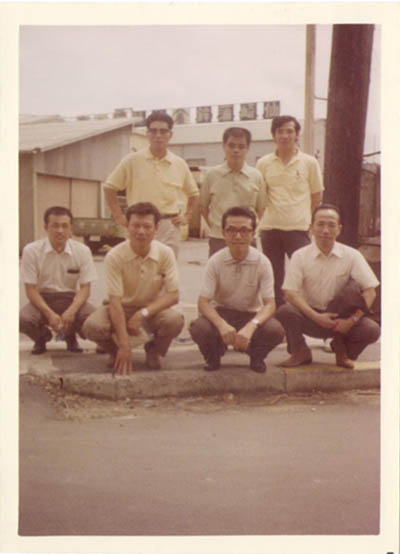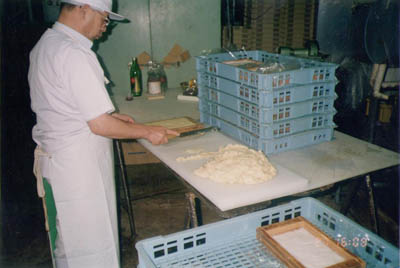- ホーム
- History
History
Hakusui’s current president is the fourth generation.
Egoshi Kamaboko was founded in November 1903 by Suekichi Egoshi and his wife Toku in Saga Prefecture. The business continued to do well in Saga, and was passed on to Ichitaro Egoshi and his wife Kin, the second generation. However, they lost everything when the war broke out, and the second generation was killed in action (May 1945). After losing everything, Masayuki Egoshi III moved to Fukuoka and founded Hakusui Kamaboko in September 1969 with his wife Teruko, struggling in the chaotic postwar period.


Although the industry gradually developed in step with Japan’s period of rapid economic growth, the “200 nautical mile problem” occurred in 1977, causing major problems for the fishing industry.
The pelagic fishery and the westward trawl fishery were regulated, and the abundant marine resources were suddenly strained.
Meanwhile, the invention and development of “frozen surimi” was about to revolutionize the kamaboko industry. This groundbreaking invention made it possible to freeze and preserve a large fish called “Alaska Pollack,” which had only been used in Hokkaido, and use it as an ingredient at any time.
While the spread of frozen surimi has made it possible to secure a stable supply of raw materials, it has also reduced the number of products with delicate flavors and regional or seasonal characteristics.
Today, most frozen surimi is produced overseas (Thailand, India, Indonesia, etc.), and fish paste products are produced and sold not only in Japan, but throughout the world. Masayuki Egoshi, our predecessor, was a craftsman of fish paste more than any other. He also considered his own upbringing and the origins of kamaboko.

“Kamaboko is a dish. Kamaboko is a traditional Japanese food culture. To be truly delicious, you have to start from the very beginning (raw materials, fresh fish), with ingredients that you have a good eye for.”
While other companies in the same industry have switched to mass production using frozen surimi one after another, we have been adamantly sticking to “fresh fish from the Genkai Sea, Eso” and have devoted our lives to producing truly delicious fish paste products.
“Kamaboko can be made from fresh fish. Thanks to our persistence, we have been honored with the presentation of our “Hakata Genkai Fishermen’s Tempura” to the Emperor and Empress of Japan, and have received various awards.
